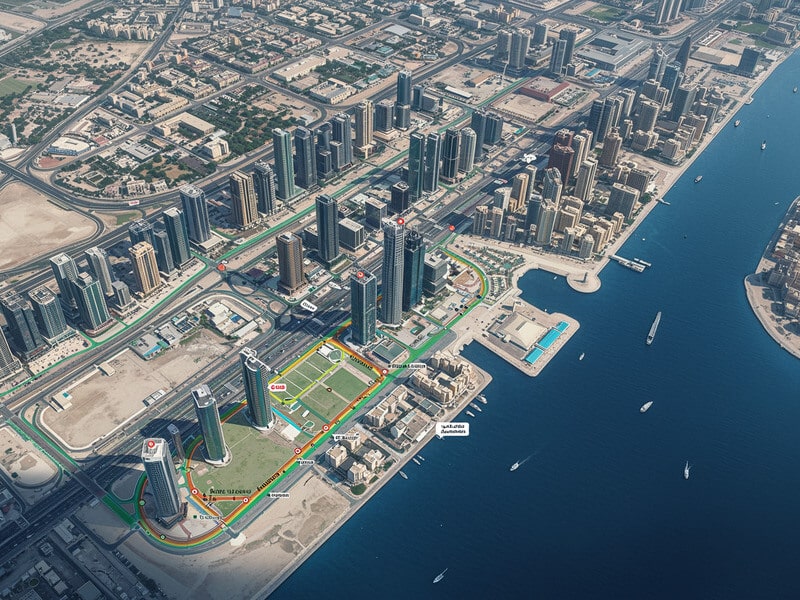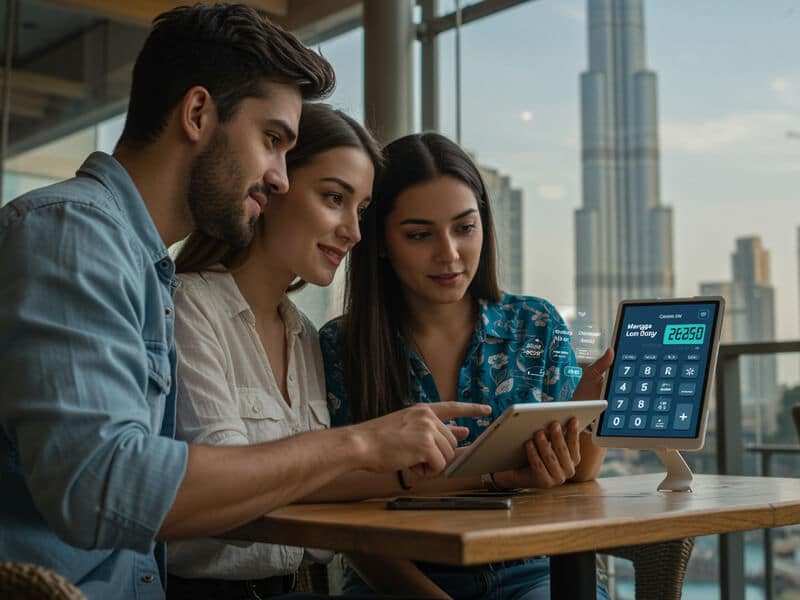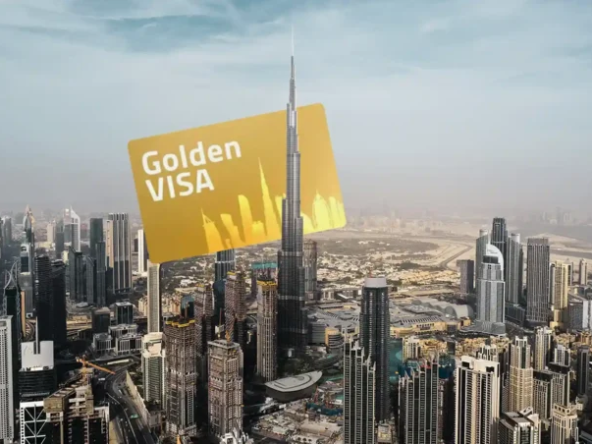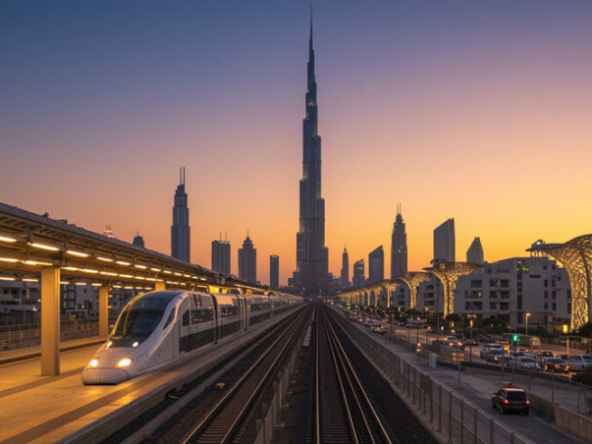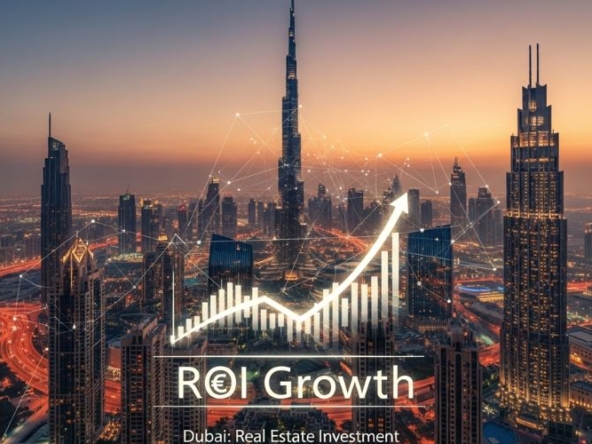Introduction to Dubai Metro
The Dubai Metro system is a cornerstone of the city’s public transportation network. Knowing the operational hours and availability of metro services is crucial for planning your travel effectively.
The metro has significantly influenced real estate growth, with properties near stations seeing a notable increase in value. This trend is evident in both residential and commercial sectors, making metro-connected properties highly desirable.
Additionally, the Dubai Metro offers Wi-Fi connectivity for passengers, enhancing the travel experience by allowing them to stay connected on the go.
The Dubai Metro is a comprehensive and efficient public transportation system in Dubai, United Arab Emirates. Managed by the Roads and Transport Authority (RTA), it has been in operation since September 9, 2009. The metro system consists of two main lines: the Red Line and the Green Line, spanning a total length of 89.6 kilometers and encompassing 55 stations. This extensive network provides easy access to various tourist attractions, business districts, and residential areas, making it a vital part of the city’s transportation infrastructure. With its modern trains and convenient services, the Dubai Metro has become a popular mode of transportation for both locals and visitors, offering a reliable and efficient way to navigate the bustling city of Dubai.
Metro-Powered Real Estate Growth
The Dubai Metro is more than just a transport system—it’s a powerful catalyst for real estate transformation. Centrepoint Station is a significant interchange point in the new Dubai Metro Blue Line project. Since launching in 2009, it has drastically improved mobility and significantly boosted property values near its network of stations. Jebel Ali is a crucial interchange station within the Dubai Metro system.
If you’re eyeing new projects in Dubai, seeking areas with strong rental yield, or want to understand how Dubai Metro stations impact investment potential, this blog has you covered.
The Metro Effect: Historical Impact on Property Values
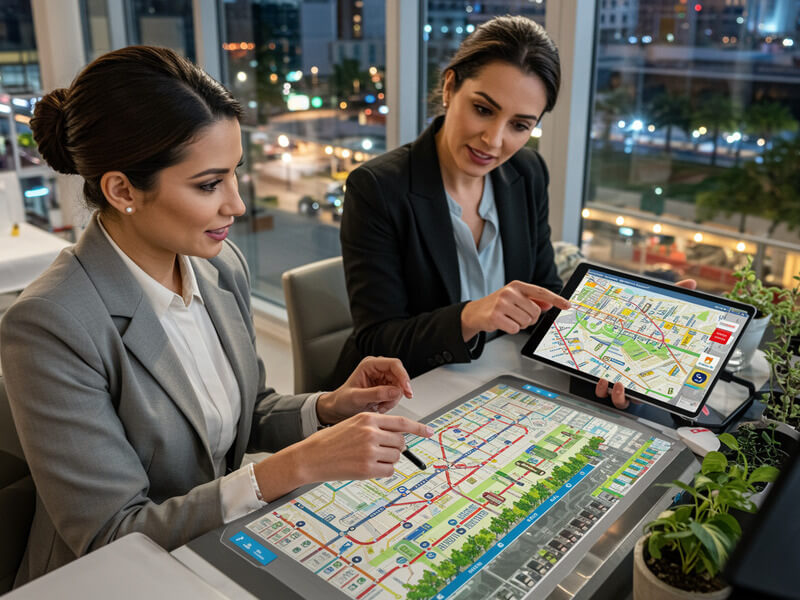
According to the CBRE Dubai Metro Report 2023:
- Properties within a 15-minute walk of a Red Line station increased by 26.7% in value between 2010–2022. The Red and Green lines are integral parts of the metro system, significantly impacting property values.
- Rentals in those same areas rose 5.7%, while Dubai’s average rents actually dropped. The two lines, with their specific routes and key stations, enhance connectivity and accessibility, making these areas more desirable.
Sweet Spot? Properties located 10–15 mins from stations saw the highest value appreciation (43.8%) and rental growth (11.7%).
Why the surge? Convenience, connectivity, reduced commute times, and better tenant demand.
Where to Invest: Prime Areas Near Dubai Metro Stations
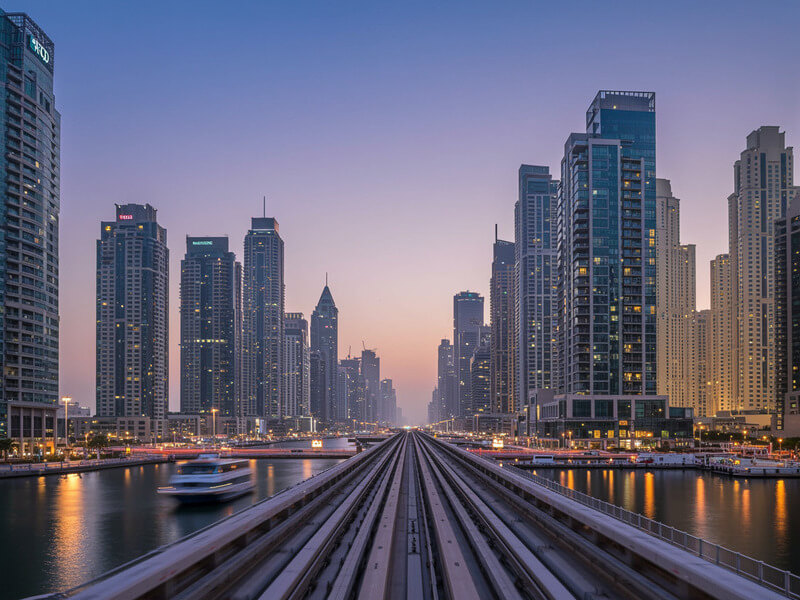
The Dubai Metro is a convenient and efficient way to explore the city. There are several metro stations strategically located around the city, making it easy for visitors to access key attractions and destinations. The metro system is clean, safe, and affordable, providing a hassle-free travel experience for both tourists and residents.
The metro network includes key transfer stations like Burjuman and Union, which facilitate connections between different lines, such as the Green Line and the Red Line, easing travel across the metro network.
Red Line Investment Zones
- Dubai Marina – High-end waterfront properties, near Sobha Realty & DMCC stations. Visitors can easily access Global Village by using RTA buses from various Red Line stations.
- Downtown Dubai – Premium pricing and rental demand, close to Burj Khalifa/Dubai Mall Metro Station.
- JLT (Jumeirah Lake Towers) – High-rises, walkability, affordable prices, and a key stop on the Dubai Metro’s Red Line, emphasizing its importance for accessibility and connectivity in Dubai.
- Business Bay – Dubai’s business district, increasingly popular for young professionals.
Green Line Hotspots
- Deira & Bur Dubai – Cultural hubs with affordable housing, near Al Fahidi & Al Ghubaiba. Creek Station is a crucial interchange point on the Dubai Metro system, enhancing connectivity between key areas in Dubai.
- Al Nahda & Al Qusais – Family-friendly communities, popular with budget renters. Al Jaddaf is a key station on the Blue Line project, serving as a crucial interchange point connecting to various parts of Dubai.
Top developers in Dubai like Emaar, DAMAC, and Azizi have invested heavily in these metro-connected neighborhoods.
Upcoming Game-Changer: Blue Line Expansion
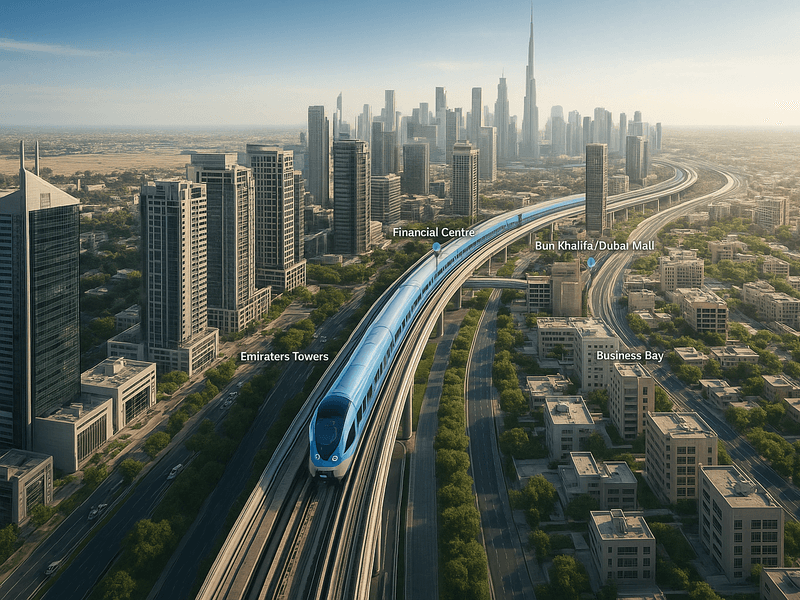
The Dubai Metro Blue Line, expected by 2029, is set to connect:
- Dubai International Airport
- Dubai Silicon Oasis
- Mirdif
- Dubai Creek Harbour
- Ras Al Khor
- Academic City
The existing lines, Red and Green, currently form the backbone of Dubai’s metro system, and the anticipated Blue Line will enhance connectivity between these existing lines.
These areas are now underpriced compared to core zones—making them high-potential spots for early investors.
Real estate experts forecast a 20-25% surge in property prices in Blue Line-connected areas by 2030.
Interchange stations will play a crucial role in facilitating commuter access and expanding the network’s reach across the emirate.
Why Tenants Choose Metro-Connected Properties
Tenants are increasingly seeking metro-accessible homes, and here’s why:
- Faster commutes with less stress. Accessibility services for metro users enhance convenience for commuters using the Dubai Metro system.
- Lower transportation costs (no fuel, tolls, or parking)
- Proximity to malls, restaurants, and coworking spaces
- Eco-conscious commuting options. Specific provisions are made for different groups of commuters to ensure a seamless experience.
Millennials, professionals, and small families are leading the demand for metro-located homes.
Luxury vs. Affordable: Housing Near Dubai Metro
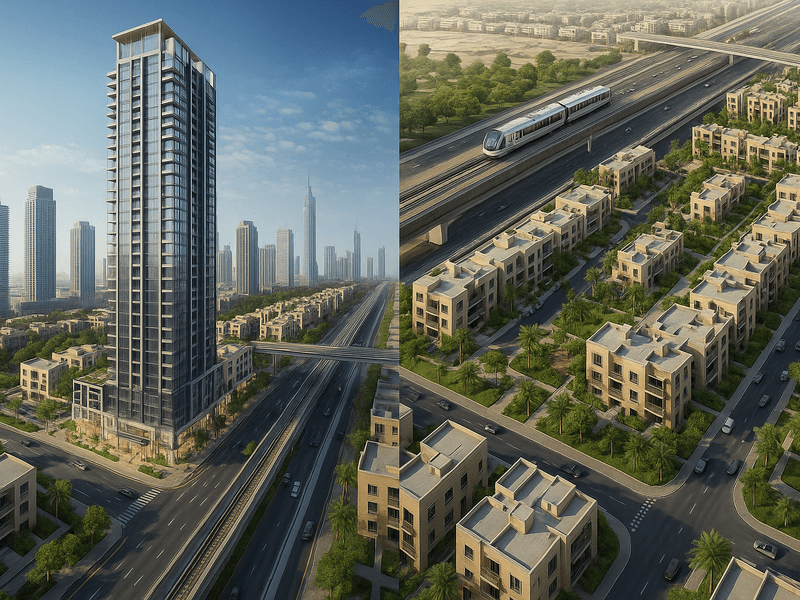
Luxury near Metro:
- Dubai Marina, Downtown, Business BayThink skyline views, high-end amenities, and exclusive apartments near metro lines. Life Pharmacy’s new naming rights for a key Dubai Metro station, now referred to as Life Pharmacy Metro Station, highlight the strategic investment in advertising opportunities at such prominent locations.
- Al Barsha, Discovery Gardens, Al Nahda, International CityOffer access to Dubai Metro stations, but at prices suitable for mid-income families. The Gold Card allows users to enjoy the luxury of traveling in Gold Class cabins for a premium experience on the metro and tram, distinguishing it from other card options that offer standard or concessionary travel.
Demand is high across both segments—making metro proximity a universal win for property owners.
Key Stations to Watch in 2025
| Metro Station | Nearby Hotspot | Top Developers |
|---|---|---|
| Dubai Internet City | Barsha Heights, TECOM | Azizi, Deyaar |
| DMCC Station | Dubai Marina | Emaar, Select Group |
| Burj Khalifa/Dubai Mall | Downtown Dubai | Shapoorji Properties, Emaar |
| Business Bay | Bay Square, Executive Towers | DAMAC, Omniyat |
| Al Ghubaiba | Dubai Creek | Dubai Properties |
| Dubai Silicon Oasis (Upcoming Blue Line) | Tech Park | MAG Group, DSOA |
Tip: Study the Dubai Metro map and cross-reference new project launches with connectivity advantages. The Metro system also provides direct access to Dubai International Airport, with key stations like Terminal 3 and Terminal 1 facilitating convenient connections for travelers.
Dubai Metro Train and Classes
The Dubai Metro train is a state-of-the-art vehicle equipped with advanced technology and amenities to ensure a comfortable journey for all passengers. The train features three distinct classes: Gold Class, Women and Children’s Class, and Standard Class. The Gold Class offers luxurious seats and exclusive amenities, providing a premium travel experience. The Women and Children’s Class is designed to offer a safe and comfortable space specifically for female passengers and children. The Standard Class, the most common class, is available to all passengers and provides a comfortable and efficient travel option. Additionally, the Dubai Metro train has dedicated spaces for wheelchair users and passengers with disabilities, ensuring accessibility for all. The air-conditioned cabins and comfortable seating make the Dubai Metro an ideal mode of transportation, especially in the hot Dubai climate.
Dubai Metro Tickets and Payment
To use the Dubai Metro, passengers need to purchase a Nol card, a rechargeable smart card that can be used to pay for fares on the metro, buses, and trams. Nol cards can be purchased at any metro station, bus station, or authorized retailer. For added convenience, passengers can use the Nol Pay app to top up their cards and pay for fares. The Dubai Metro offers various types of tickets, including single-ride tickets, day passes, and monthly passes. The fare is calculated based on the number of zones traveled, with a minimum fare of AED 3 and a maximum fare of AED 7.5. In addition to metro fares, passengers can use their Nol cards to pay for other services, such as taxi fares and parking fees, making it a versatile and convenient payment option for navigating the city.
FAQs: Dubai Metro & Real Estate Investment
Q: Is buying near a metro station worth it in Dubai?
Yes! Homes near metro lines consistently see higher ROI, tenant demand, and property value growth.
Q: Where can I see the Dubai Metro map?
On the RTA Dubai App or the official RTA website.
Q: What’s the most underrated metro-connected area for investment?
Ras Al Khor and Dubai Silicon Oasis—set to be transformed by the Blue Line.
Q: Which metro station is best for tech professionals?
Dubai Internet City Metro Station—serving Dubai’s tech and media clusters.
Riding the Rail to ROI
The Dubai Metro isn’t just a convenience—it’s a wealth engine for savvy investors. Stay connected for updates on Dubai’s transport system and city living insights. Whether you’re seeking luxury real estate, affordable rental units, or want to get ahead with new projects in Dubai, look no further than properties near metro stations.
Invest where the metro goes, and the value follows. Want help identifying the best Dubai Metro-connected investment opportunities? Contact Splendor.ae for curated listings and expert guidance. The various forms of public transport available in Dubai, such as the metro, buses, trams, and water buses, further enhance the investment potential of properties near these transport hubs.

